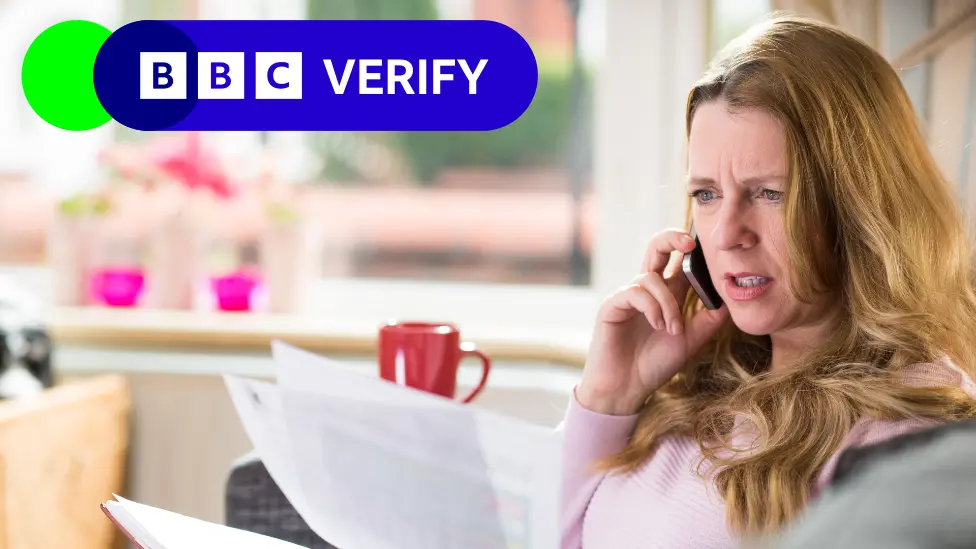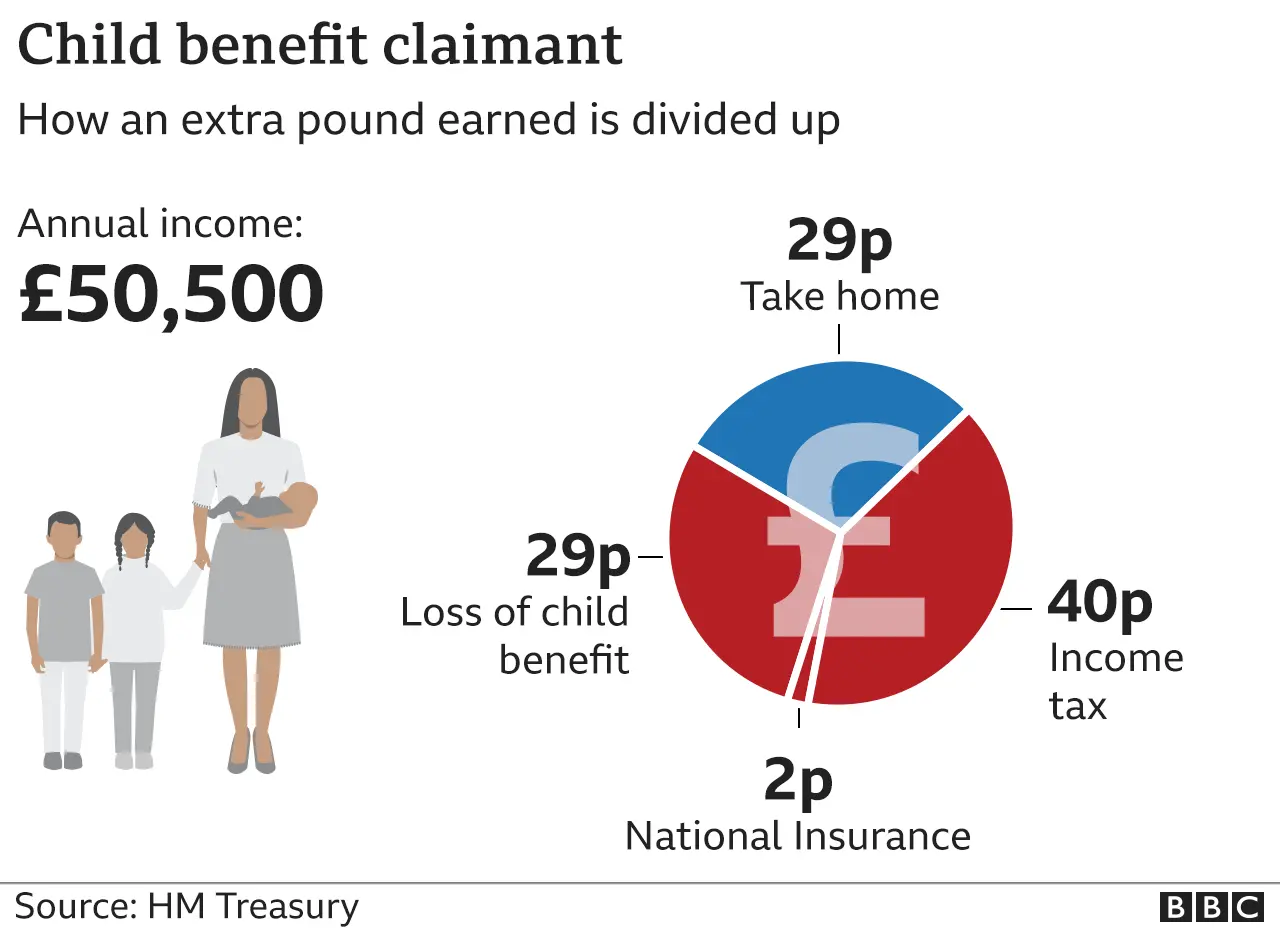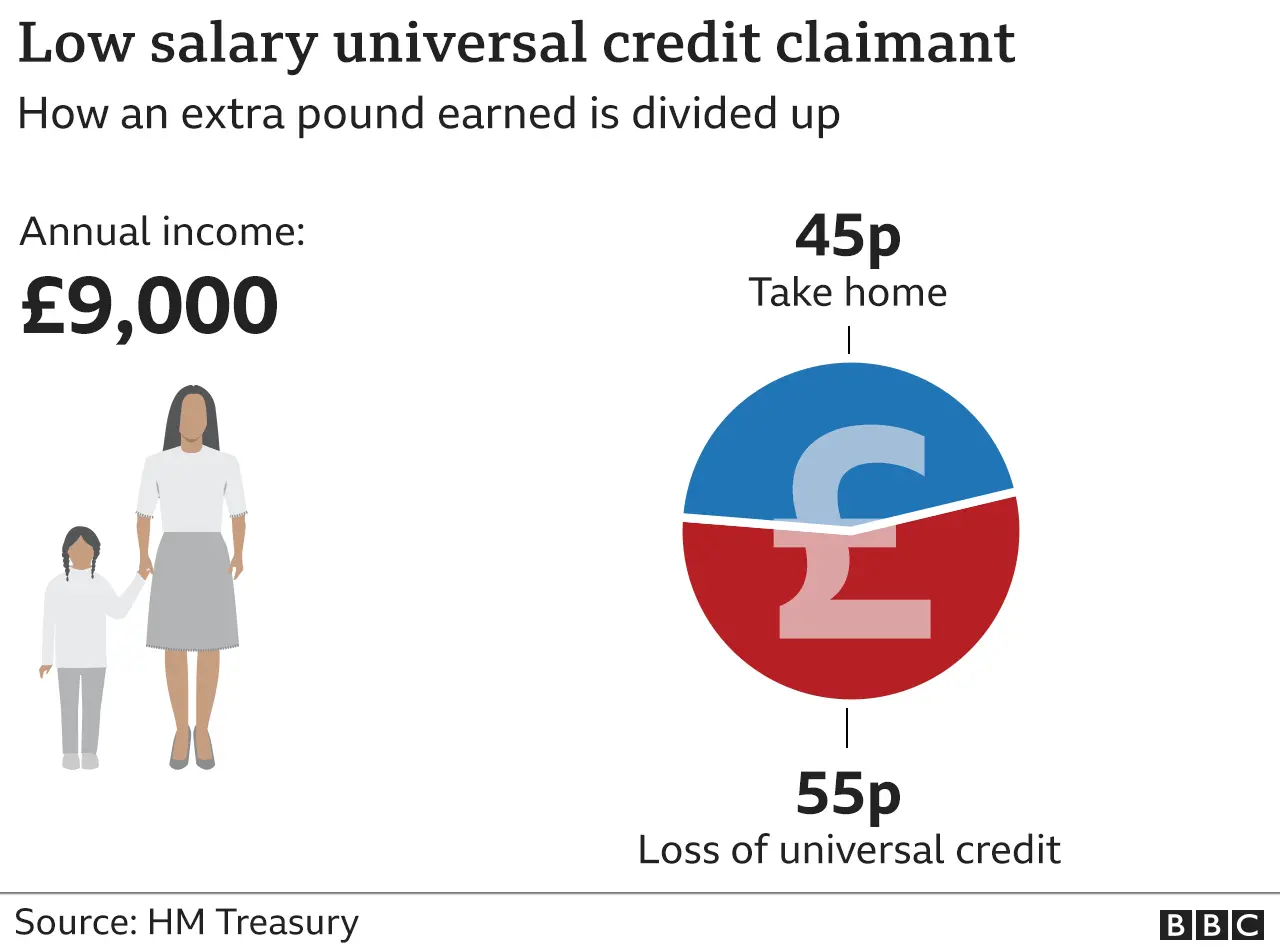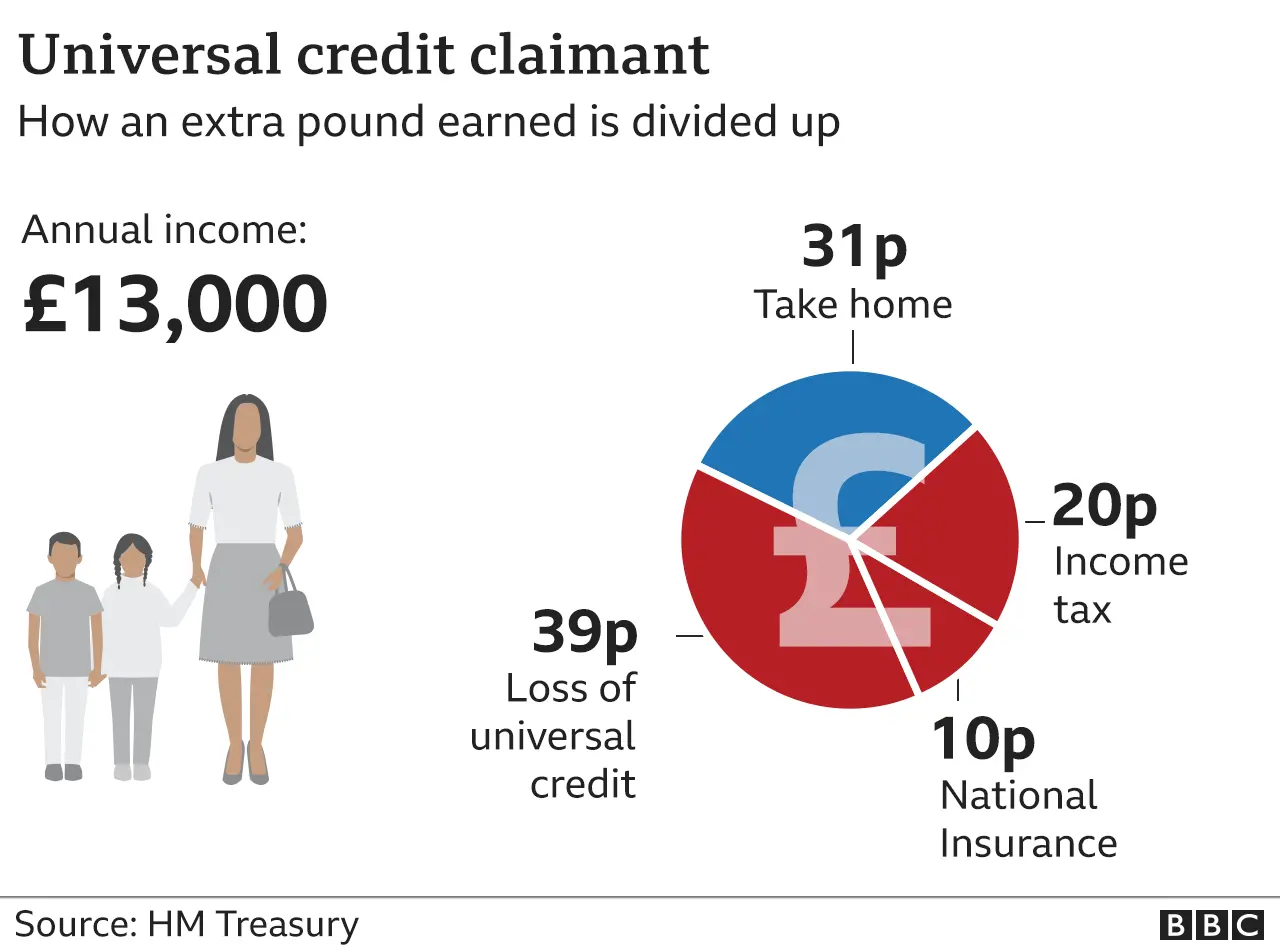Why some parents effectively pay a 71% tax rate
 Getty Images
Getty ImagesPeople pay different levels of tax depending on how much they earn. The top rate of income tax is 45% for those earning more than £125,140, with another 2% in National Insurance on top.
But the complexities of the system mean some people who earn less are hit with a higher effective tax rate because they start losing government benefits once their earnings exceed certain limits.
One way of measuring this is by looking at how much they get to keep of every extra pound they earn over these limits.
Here are five examples of workers who pay high effective tax rates.

Child benefit is currently £24 a week for the first child and £15.90 for each additional child.
But the benefit is withdrawn gradually for those earning between £50,000 and £60,000 - this is known as the High Income Child Benefit Charge (HICBC).
Consider someone with three children, earning £50,500 a year.
The loss of child benefit means that for an extra £1 earned over this, they take home 29p of it, so that's equivalent to a tax rate of 71%.
When child benefit rises in April, that person would take home 1p less of an extra pound.
And in Scotland a worker would be taking home even less.
We asked the Treasury about this and were told the government recognised that because of the HICBC some individuals face a high tax rates but that they were on comparatively high incomes.
"The High Income Child Benefit Charge means the government can continue to support the vast majority of families in a sustainable way and is designed so that people are better off from increased earnings," the spokesperson said.

About 38% of universal credit claimants are working. Getting people off benefits and into work is a key priority for the government.
The amount of benefits that people lose when they earn money is known as the taper rate.
The rate is 55%, which means a universal credit claimant earning £9,000 a year from a part-time job will take home 45p of an extra £1 earned.
That's an effective tax rate of 55%.

Now consider an employee, for example a parent, earning enough to pay income tax - so at least £12,570 a year - but still entitled to universal credit.
Their National Insurance has come down from 12p in the pound to 10p.
The taper rate is applied after income tax and National Insurance have been paid, so that takes up another 39p of the extra pound, leaving our employee taking home only an extra 31p, which is an effective tax rate of 69%.
The lower starter rate of income tax in Scotland means a similar worker in Scotland would be taking home 1p in the pound more.

In Scotland people start paying a 42% higher rate of income tax when they are earning £43,663 a year.
In the rest of the UK, they start paying a 40% higher rate at £50,271 a year. Those people are partly protected from having to pay a higher rate of income tax by the rate of National Insurance they pay going down to 2%.
But a worker in Scotland earning between £43,663 and £50,271 would be paying both the higher rate of income tax and the 10% main rate of National Insurance at the same time, meaning they take home only 48p of an extra £1 earned.
So that's an effective tax rate of 52%.
In the rest of the UK, employees earning that much would be paying only 20% income tax, so would take home 70p of an extra £1 earned - 22p more than their Scottish counterparts.
The reason this happens is that the Scottish Government has some control over income tax but no control over National Insurance.
A Scottish Government spokesperson told us: "Scottish Ministers continue to argue that all decisions affecting tax in Scotland should be decided by the Scottish Parliament, which would enable a more integrated approach, rather than key powers being held at Westminster."

People do not have to start paying income tax until they are earning more than £12,570 a year.
This is called the personal allowance.
But the personal allowance is withdrawn at a rate of £1 of allowance for every extra £2 earned above £100,000.
So those earning more than £100,000 a year start paying tax on part of their earnings they did not previously have to pay tax on.
And this means someone earning between £100,000 and £125,140 a year would take home 38p of an extra £1 earned. That's an effective tax rate of 62%.
In Scotland, a similar worker would be taking home even less of an extra pound earned.

Compare all of these people with somebody earning more than £125,140 and paying what is supposedly the top rate of tax.
That person would take home 53p of an extra £1 earned, meaning an effective tax rate of 47%.
In Scotland they would take home 2p in the pound less - from April it will be 3p less.
We asked the Treasury about why some lower earners are taking home less of an extra pound earned than much higher earners and were told: "We have taken three million people out of paying income tax altogether by increasing personal thresholds since 2010 and the average earner will save £450 this year from our National Insurance cut."


